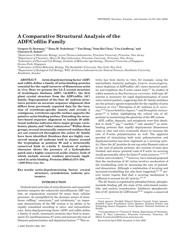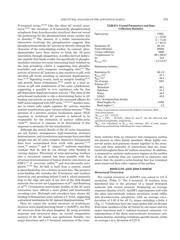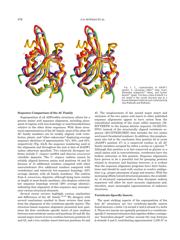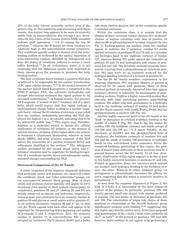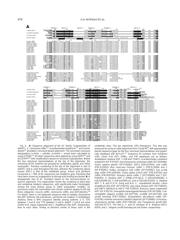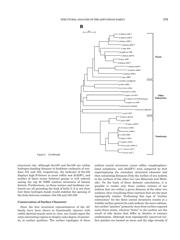Datasheet 搜索 > RF模块、IC及配件 > ADI(亚德诺) > ADF7012BRU 数据手册 > ADF7012BRU 其他数据使用手册 1/11 页
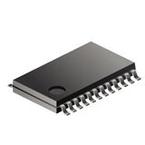
 器件3D模型
器件3D模型¥ 5.181
ADF7012BRU 其他数据使用手册 - ADI(亚德诺)
制造商:
ADI(亚德诺)
分类:
RF模块、IC及配件
封装:
TSSOP
描述:
多通道ISM频段FSK / GFSK / OOK / GOOK / ASK发射器 Multichannel ISM Band FSK/GFSK/OOK/GOOK/ASK Transmitter
Pictures:
3D模型
符号图
焊盘图
引脚图
产品图
ADF7012BRU数据手册
Page:
of 11 Go
若手册格式错乱,请下载阅览PDF原文件

A Comparative Structural Analysis of the
ADF/Cofilin Family
Gregory D. Bowman,
1,2
Ilana M. Nodelman,
1,2
Yan Hong,
3
Nam-Hai Chua,
4
Uno Lindberg,
5
and
Clarence E. Schutt
2
*
1
Department of Molecular Biology, Lewis Thomas Laboratories, Princeton University, Princeton, New Jersey
2
Department of Chemistry, Henry H. Hoyt Laboratory, Princeton University, Princeton, New Jersey
3
Laboratory of Plant and Cell Biology, Institute of Molecular Agrobiology, National University of Singapore,
Science Park, Singapore
4
Laboratory of Plant Molecular Biology, The Rockefeller University, New York, New York
5
Department of Zoological Cell Biology, WGI, Arrhenius Laboratories for Natural Sciences, Stockholm University,
Stockholm, Sweden
ABSTRACT Actin-depolymerizing factor (ADF)
and cofilin define a family of actin-binding proteins
essential for the rapid turnover of filamentous actin
in vivo. Here we present the 2.0 Å crystal structure
of Arabidopsis thaliana ADF1 (AtADF1), the first
plant crystal structure from the ADF/cofilin (AC)
family. Superposition of the four AC isoform struc-
tures permits an accurate sequence alignment that
differs from previously reported data for the loca-
tion of vertebrate-specific inserts and reveals a
contiguous, vertebrate-specific surface opposite the
putative actin-binding surface. Extending the struc-
ture-based sequence alignment to include 30 addi-
tional isoforms indicates three major groups: verte-
brates, plants, and “other eukaryotes.” Within these
groups, several structurally conserved residues that
are not conserved throughout the entire AC family
have been identified. Residues that are highly con-
served among all isoforms tend to cluster around
the tryptophan at position 90 and a structurally
conserved kink in ␣-helix 3. Analysis of surface
character shows the presence of a hydrophobic
patch and a highly conserved acidic cluster, both of
which include several residues previously impli-
cated in actin binding. Proteins 2000;41:374–384.
© 2000 Wiley-Liss, Inc.
Key words: actin-depolymerizing factor; crystal
structure; cytoskeleton; isoform; pro-
teomics
INTRODUCTION
Orchestrated networks of actin filaments and associated
proteins comprise the eukaryotic microfilament (MF) sys-
tem, an organization essential for many basic cellular
processes. As exemplified by the dynamic nature of mem-
brane ruffling,
1
exocytosis,
2
and cytokinesis,
3
an impor
-
tant characteristic of the MF system is its ability to be
rapidly remodeled according to intra- and extracellular
cues. Actin-depolymerizing factor (ADF) and cofilin define
a family of small, monomeric proteins that bind to mono-
meric (G) and filamentous (F) actin and increase the rate of
filament polymerization and depolymerization.
4,5
This ac
-
tivity has been shown in vitro, for example, using the
intracellular bacterial pathogen Listeria monocytogenes,
where depletion of ADF/cofilin (AC) slows bacterial motil-
ity and lengthens the F-actin comet tails.
6,7
In studies of
cofilin mutants in Saccharomyces cerevisiae, wild-type AC
activity is necessary for rapid depolymerization of yeast
actin cortical patches, suggesting that AC family members
are the primary agents responsible for the rapidity of actin
turnover in vivo.
8
Disruption of AC isoforms in S. cerevi
-
siae,
9,10
Caenorhabditis elegans,
11
and Drosophila melano
-
gaster
12
is lethal, highlighting the critical role of AC
proteins in maintaining the plasticity of the MF system.
ADF, cofilin, depactin, and actophorin were first identi-
fied in chick,
13
pig,
14
starfish,
15
and amoeba
16
as actin-
binding proteins that rapidly depolymerize filamentous
actin in vitro and were eventually shown to increase the
rate of F-actin polymerization as well. The apparent
paradox of stimulating both actin polymerization and
depolymerization has been explained as a severing activ-
ity. Since the AC proteins do not cap actin filament ends as
in the case of gelsolin proteins, the creation of more plus
(barbed) and minus (pointed) ends of F-actin via severing
would presumably allow for faster F-actin turnover.
14,17,18
Carlier and coworkers,
7,19
however, have instead proposed
that the mechanism of AC action involves acceleration of
the treadmilling cycle by increasing the rate of pointed-
end dissociation. Although a combination of severing and
increased treadmilling has also been suggested,
20–22
sev
-
eral recent reports find that a severing mechanism is
sufficient to account for AC activity.
23–25
The AC family is regulated by phosphorylation, phospho-
inositide binding, pH, the state of the actin-bound nucleo-
tide, and nuclear translocation. Inhibitory phosphoryla-
tion of AC proteins by LIM kinase
26,27
targets a conserved
Grant sponsor: Swedish Natural Science Council; Grant sponsor:
Swedish Cancer Foundation; Grant Sponsor: National Science and
Technology Board, Singapore; Grant Sponsor: National Institutes of
Health.
*Correspondence to: Clarence E. Schutt, Department of Chemistry,
Henry H. Hoyt Laboratory, Princeton University, Princeton, NJ
08544. E-mail:schutt@chemvax.princeton.edu
Received 24 April 2000; Accepted 14 July 2000
PROTEINS: Structure, Function, and Genetics 41:374–384 (2000)
© 2000 WILEY-LISS, INC.
器件 Datasheet 文档搜索
AiEMA 数据库涵盖高达 72,405,303 个元件的数据手册,每天更新 5,000 多个 PDF 文件
